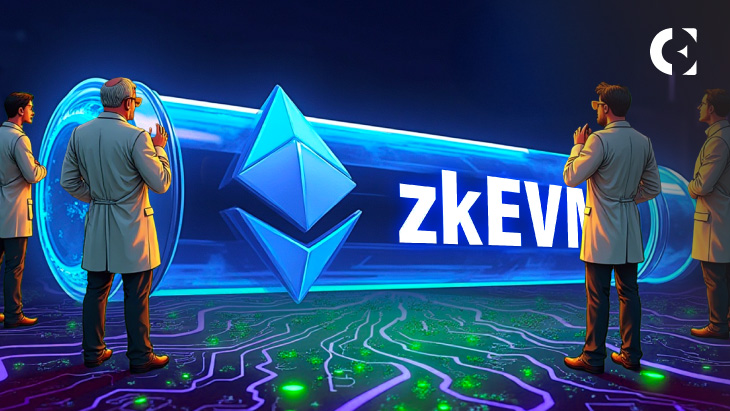- The Ethereum Foundation has announced a long-term plan to integrate ZK-proofs directly into Layer 1
- The goal is for validators to verify a single proof instead of re-executing all transactions in a block
- The multi-year plan will begin with optional zk-clients and upgrades in the upcoming Pectra hard fork
The Ethereum Foundation has announced a detailed plan to integrate zero-knowledge (zk) technology directly into Ethereum’s Layer 1. This marks a major infrastructure shift aimed at dramatically increasing the network’s scalability and privacy.
The project, outlined in a blog post on July 10, proposes fundamental changes to how validators operate and to the Ethereum Virtual Machine (EVM) itself. The end goal is to allow validators to simply verify a single, lightweight zk-proof for each block, instead of having to re-execute all the transactions within it.
The Plan: How ZK-Proofs Will Change Ethereum
According to the Foundation, the upgrade centers on two major changes. First, the execution layer will be optimized to support the generation of zk-proofs, with upgrades like EIP-2537 planned for the upcoming Pectra hard fork. Second, the logic for validators will be restructured to support “stateless verification,” where they check these zk-proofs instead of executing blocks manually.
Related: Ethereum Foundation’s Aggressive Moves Raise Eyebrows as Market Eyes $2,700 Resistance
These changes are expected to massively improve the network’s throughput while reducing the computing demands on the people and organizations who run validator nodes. Specialized zkVMs will be responsible for proving that a block is valid, and validators will then simply verify these succinct proofs.
A Gradual Rollout Starting with Optional Clients
The Ethereum Foundation said it aims to begin this process by first giving validators the option to run new, zk-enabled clients. During this early phase, the execution proofs will be verified off-chain. The network protocol will also require updates in the upcoming Glamsterdam upgrade to allow for additional proving time.
Initial adoption of these new zk clients is expected to be low. However, as their performance and security are proven in a live production environment, broader participation is anticipated. Once a supermajority of the network’s stake has shifted to using zk-based clients, Ethereum can then safely raise its gas limit to a level where full block execution is no longer necessary.
Goals and Risks
The Foundation is targeting strict performance benchmarks for the new system. These include generating 99% of all block proofs within 10 seconds, keeping the hardware requirements for provers under $100,000, and limiting the proof size to under 300 KiB. The system also aims for 128-bit quantum-resistant security.
Related: Ethereum Foundation Sets New Treasury Policy, Caps Annual Spending at 15%
However, the proposed model does carry some risks. The responsibility for producing valid blocks will shift more heavily to specialized “builders” and “provers,” which raises some concerns about potential collusion or downtime that could halt network activity if not implemented carefully.
Disclaimer: The information presented in this article is for informational and educational purposes only. The article does not constitute financial advice or advice of any kind. Coin Edition is not responsible for any losses incurred as a result of the utilization of content, products, or services mentioned. Readers are advised to exercise caution before taking any action related to the company.







